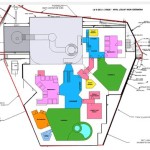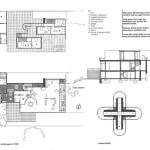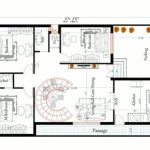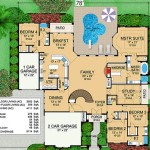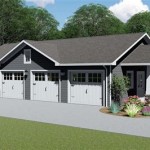Essential Aspects of Container Architecture Floor Plans
Container architecture, a unique and innovative approach to building design, utilizes shipping containers as the primary structural elements. Designing efficient and functional floor plans for container structures requires careful consideration of the following essential aspects:
Container Dimensions and Layout
Understanding the standard dimensions of shipping containers is crucial. The most common size is a 20-foot container (6.1 meters long, 2.4 meters wide, and 2.6 meters high). 40-foot containers (12.2 meters long) are also frequently used. The arrangement of containers on the floor plan determines the overall shape and layout of the structure.
Functional Zones and Flow
Define the specific functional zones within the container architecture. This includes areas for living, sleeping, cooking, bathing, and storage. Consider the flow of movement between these zones, ensuring a logical and efficient arrangement that minimizes wasted space and promotes a comfortable living environment.
Natural Light and Ventilation
Natural lighting is essential for creating a healthy and inviting indoor atmosphere. Incorporate windows and skylights into the floor plan to maximize daylight penetration. Adequate ventilation is equally important to maintain a comfortable temperature and air quality. Plan for ventilation systems such as exhaust fans or openable windows.
Structural Considerations
The floor plan must take into account the structural integrity of the container architecture. Distribute weight evenly across containers to avoid overloading any single unit. Consider reinforcement measures where necessary, such as additional support beams or columns, particularly for multi-story structures.
Accessibility and Safety
Ensure that the floor plan accommodates accessibility needs, including ramps or elevators for mobility-impaired individuals. Safety measures such as fire escapes, emergency exits, and adequate signage should also be incorporated into the design.
Space Optimization
Container architecture often involves limited space. Therefore, it is essential to optimize the use of available space through clever design solutions. Use built-in storage, modular furniture, and multi-purpose areas to maximize functionality without compromising on comfort.
Flexibility and Adaptability
Consider the potential for future changes to the floor plan. The modular nature of container architecture allows for flexibility and adaptability. Design the layout with the possibility of reconfiguring or expanding in mind, accommodating future needs or changes in lifestyle.
Professional Assistance
For complex container architecture projects, it is highly recommended to consult with experienced professionals. Architects and engineers can provide invaluable expertise in structural design, building codes, and optimization techniques, ensuring the safety and functionality of your container home or building.

Method In Modular 10 Floor Plans Using Container Architecture Archdaily

Method In Modular 10 Floor Plans Using Container Architecture Archdaily

Container Home Floor Plans Structures Layouts More Ideas

Container Design Old Lady House Plans Homes

Container Home 6 Floorplan Design Plans House

Container Architecture Containers New Zealand

Method In Modular 10 Floor Plans Using Container Architecture Archdaily

Best Ing Container House Plans 700 Sq Foot Home 2 Bedroom Bathroom

Ship Container House Plans 3 Containers Building A Home

40 Foot Container Containers Home Construction Plan House Plans Homes Accessory Dwelling Unit

